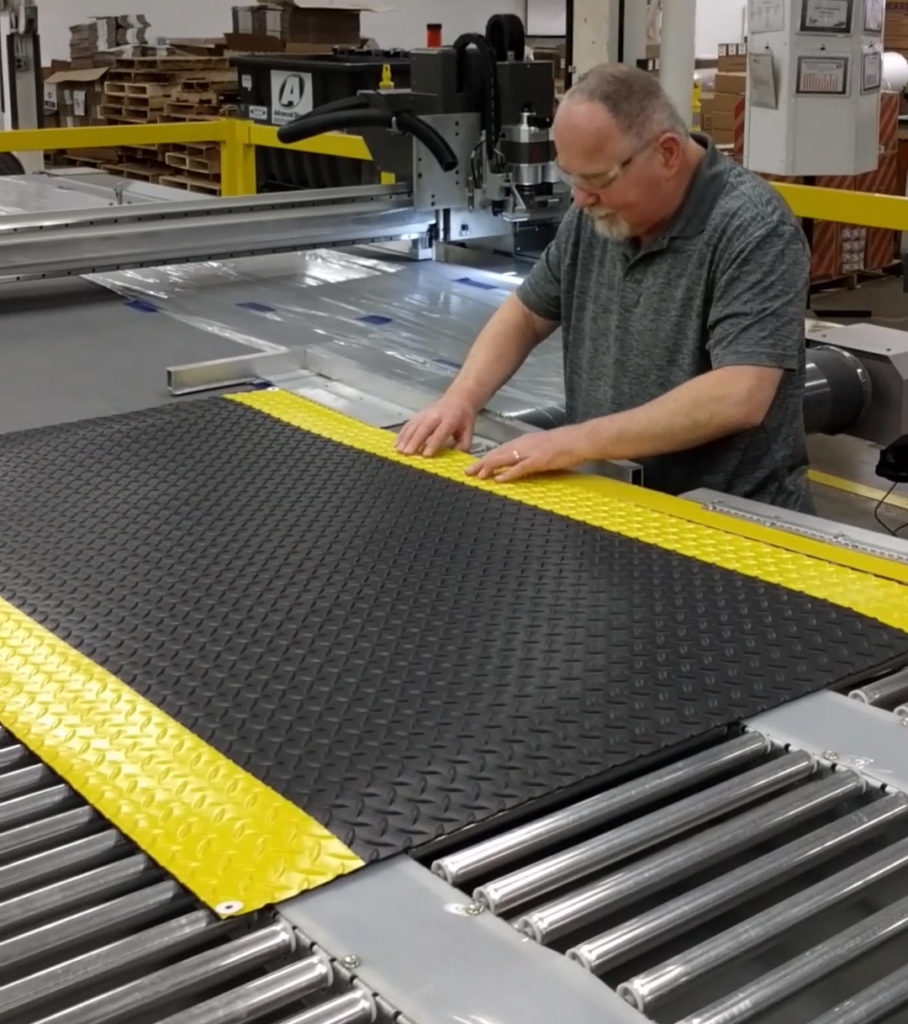Production began on cocoa mats in 1932. The looms and equipment were we uniquely designed and built by Supervisor Joseph Ptacek. His development made it possible to take people who were blind away from making brooms and baskets into a different type of production. This innovation created an opportunity to elevate employment options for people who are blind.
By 1940, the cocoa hair mat production expanded to include rubber mats. Both of which were being sold to the U.S. Government and were the chief source of cocoa mats. During World War II, rubber mat production was halted due to war restrictions on material. Luckily, they had stocked enough of the coir yarn for cocoa mats to continue full time work through February 1944.
In 1950, the Federal Government established its Procurement List, identifying products and services that the Government must buy from organizations in the AbilityOne® Program. A program created to ensure that people who are blind or severely disabled have employment opportunities. To this day, Beyond Vision’s cocoa hair mat is the oldest item on the Procurement List.
Remember the AstroTurf mat with three white daisies on it? We began making them in 1972. While they were not produced for a long time, they were memorable. (If you have a picture, please send it in! marketing@beyondvision.com)
By 1995 we no longer produced the cocoa mats by hand on the looms created by Ptacek. We did add production of anti-fatigue, industrial hard top and scraper mats. Today we have even developed a mat cutter to allow a person who is fully blind to cut mats. Mats which are still being sold to the Federal Government and create sustainable employment for people who are blind.
You can help us continue to innovate and advance employment opportunities for people who are blind.